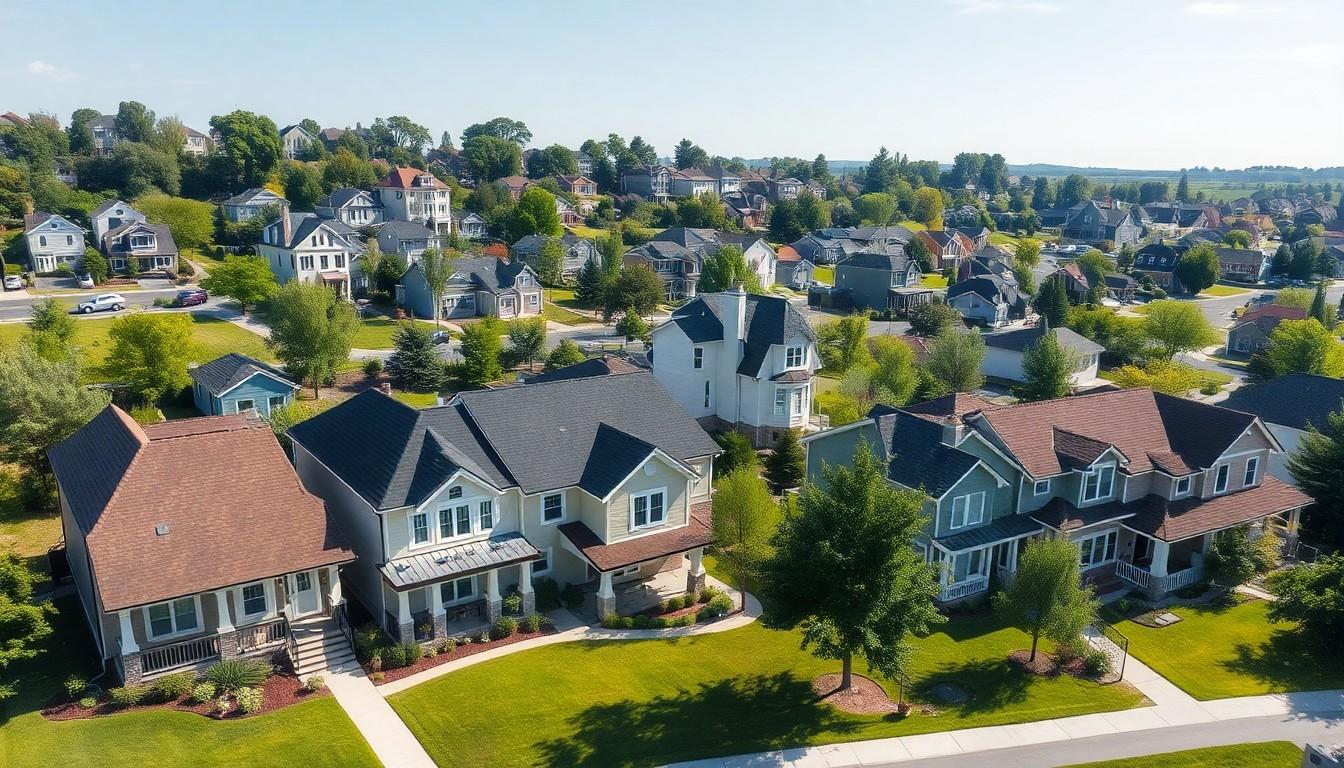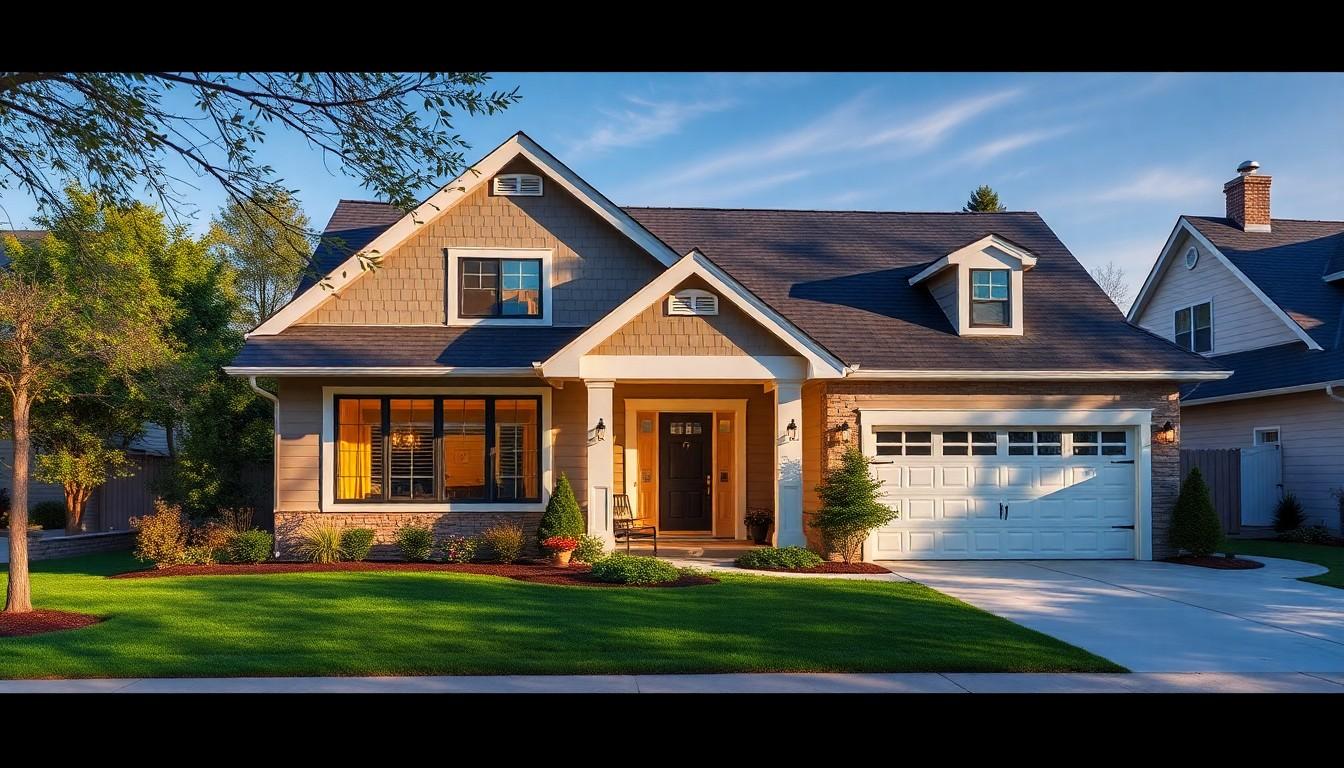Phone:
(701)814-6992
Physical address:
6296 Donnelly Plaza
Ratkeville, Bahamas.

When it comes to finding a place to call home, the choices can feel overwhelming. From cozy cottages to sprawling estates, the world of residential properties is as diverse as the people who inhabit them. Each type of property has its own unique charm and quirks, and understanding these differences can make all the difference in your home search journey.
Various types of residential properties cater to different lifestyles and preferences. Single-family homes typically offer privacy and space, making them ideal for families. Townhouses present a middle ground, combining the benefits of communal living with individual ownership. Condominiums provide low-maintenance living, allowing residents to enjoy amenities without extensive upkeep.
Multi-family units serve those seeking investment opportunities. Duplexes and triplexes accommodate multiple families within one building, often enhancing rental income. Apartments can range from studios to larger spaces, appealing to urban dwellers who prioritize location and convenience.
Luxury homes stand out with high-end features and prime locations. These properties often include vast square footage, expansive outdoor living spaces, and top-notch appliances. Similarly, vacation homes can serve as retreats, providing owners with a getaway in a desirable destination.
Each residential property type has unique characteristics, influencing choice based on lifestyle, budget, and personal needs. Understanding these distinctions helps potential homeowners make informed choices. Additionally, specific zoning regulations can affect property types, impacting future development and usage.
Consideration of factors like community amenities and proximity to schools enhances the property search. Prioritizing one’s needs leads to a more satisfying home-buying experience. Exploring the wide variety of residential properties ensures an informed decision aligned with individual aspirations.

Single-family homes represent a popular option for many prospective homeowners. These residences typically provide ample space and a private living environment.
Single-family homes typically feature separate entrances and dedicated yards. They often include at least one garage, allowing for secure parking. Various architectural styles exist, ranging from traditional to modern designs. Privacy remains a key aspect, as these homes stand independently on their lots. Space is another benefit, with most properties offering multiple bedrooms, bathrooms, and living areas. The absence of shared walls enhances the overall tranquility of living in a single-family home.
Pros of single-family homes encompass privacy and control over property modifications. Homeowners retain freedom to design outdoor spaces and landscaping without community restrictions. Potential drawbacks include higher maintenance responsibilities, which can demand significant time and resources. Expenses related to property upkeep often increase compared to shared living arrangements. Resale values may fluctuate based on neighborhood trends, impacting long-term investment stability. Buyers must consider these factors carefully when choosing their ideal home.
Multi-family homes consist of several units within one building or on a single parcel of land. These properties cater to multiple families, providing diverse living arrangements and potential investment opportunities.
Duplexes contain two separate units, often mirroring each other. Triplexes expand the structure to three units, allowing for greater rental income. Four-plexes include four distinct residences, commonly appealing to investors due to lower entry costs. Larger options, like apartment buildings, accommodate numerous units, increasing cash flow potential. Each type offers unique benefits, targeting different renters and investment strategies.
Investing in multi-family properties generates consistent cash flow through rental income. Income from multiple units mitigates financial risks, spreading costs among tenants. Appreciation in property value enhances long-term financial gains, attracting investors seeking wealth building. Tax advantages exist, including depreciation deductions, aiding in expense management. Investors must consider the demand for rental properties in specific locations, as market trends impact profitability.
Condominiums represent a popular choice for many homebuyers, especially those seeking low-maintenance living in vibrant communities. These properties often combine various amenities with versatile living spaces.
Condos typically feature shared common areas such as pools, fitness centers, and gardens. Individual units include their own kitchens, bathrooms, and living spaces. Most condominiums come with designated parking spaces or garages. Many also offer security features like gated access and concierge services. Monthly homeowners association fees usually cover maintenance, landscaping, and communal services. Builders often design them with energy-efficient appliances and modern finishes, catering to contemporary tastes. Each unit may vary in size and layout, ranging from compact one-bedroom spaces to expansive multi-bedroom options.
Living in a condominium provides significant lifestyle conveniences. Residents enjoy a sense of community with other owners and often participate in organized activities or events. With many amenities accessible on-site, residents save time and effort traveling to recreational facilities. Maintenance duties typically fall under the purview of the homeowners association, allowing for more leisure time. Proximity to urban areas often means easier access to work, shopping, and entertainment options. Additionally, condominiums present a more affordable housing option in desirable neighborhoods, offering an appealing balance between convenience and comfort.
Townhouses offer a unique blend of private ownership and community living. They typically consist of multiple attached units, each with its own entrance, allowing for individual privacy while being part of a cohesive neighborhood.
Living in a townhouse provides residents with valuable characteristics. Each unit usually features two or more levels, optimizing space for family living. Shared walls with neighbors foster a sense of community, while manageable outdoor areas, such as small yards or patios, enhance lifestyle benefits. Many townhouses incorporate modern designs and energy-efficient features, appealing to environmentally conscious buyers. Homeowners often appreciate access to community amenities such as parks or pools, promoting interactions among residents.
When comparing townhouses to single-family homes, distinct differences emerge. Townhouses generally involve lower maintenance responsibilities due to shared services and community rules. In contrast, single-family homes offer more extensive outdoor space but demand greater upkeep. Financially, townhouses tend to come with lower purchase prices than standalone properties, making them accessible to first-time buyers. Regarding multi-family units, townhouses offer more privacy than apartments while still being part of a community. Each type serves unique needs; understanding their differences helps potential homeowners choose wisely.
Navigating the world of residential properties can be both exciting and overwhelming. Each type of property offers distinct advantages and considerations that cater to different lifestyles and budgets. Whether it’s the space and privacy of a single-family home or the low-maintenance convenience of a condominium, understanding these options empowers potential homeowners.
Investors also have a wealth of choices with multi-family units and luxury homes, each presenting unique opportunities for growth and income. Ultimately, making informed decisions based on personal preferences and market conditions will lead to a rewarding home-buying journey. Exploring these property types can help individuals find the perfect fit for their needs and aspirations.